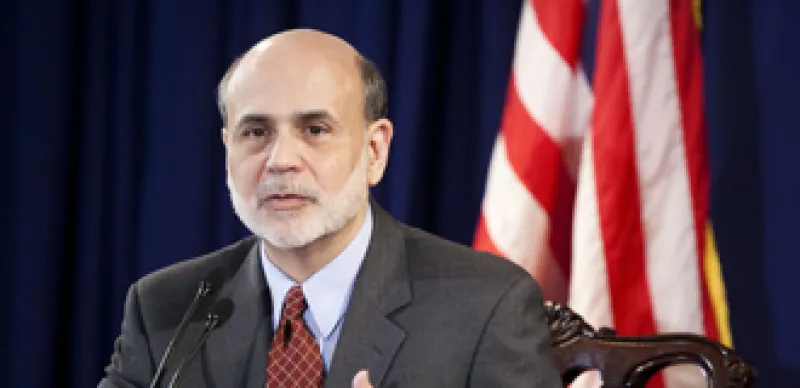Fed Chairman Ben Bernanke indicated during the central bank’s first-ever press conference that its emergency intervention in the economy, dating to the summer of 2007, will end during the second half of this year. The Fed said on Wednesday it will cap its latest asset purchase program in June at $600 billion, and Bernanke indicated that the bank will stop reinvesting proceeds of the balance sheet within a few Fed meetings.
That step would begin the process of shrinking the Fed’s balance sheet, and starting to withdraw the stimulus that it has used to guide the economy through its worst crisis since the Great Depression of the 1930s. The Fed is expected to begin raising rates in early 2012. In a sense, Bernanke’s unprecedented communication with the press on Wednesday can, in itself, be viewed as the first step in the process of tightening policy. The bank has made its intentions clear, allowing them to be “capitalized,” to use Bernanke’s term.
So just how well has the Fed performed since it began raising rates in August 2007? From the economic vantage point, it could have been more aggressive, especially in view of the weak first-quarter GDP report that was released today.
The Fed began lowering rates in August 2007, following a meeting with former Treasury secretary and Goldman chief Bob Rubin — who was on the Citi board at the time. Rubin met with Bernanke and gave him the banker’s view of the catastrophe at hand.
In response, the Fed pushed rates lower by expanding its balance sheet from about $800 billion to as much as $2.1 trillion following the collapse of Lehman Brothers in 2008. The balance sheet began to shrink, but the economy remained weak, and the Fed resumed an additional $600 billion in asset purchases late last year. And beginning with a series of moves in August 2007, the bank slashed the interest rates that it controls to near zero.
Bernanke, the 57-year-old Princeton professor and student of the Great Depression, has been criticized both for doing too much and too little. Economists such as Joseph Stiglitz and Paul Krugman have said the Fed’s stimulus program should have been several orders of magnitude larger than it was — and that today’s modest economic recovery, stubbornly high unemployment rate and still-weak housing market are the legacy of the bank’s politically timid policy.
Others are worried that the Fed has pumped too much liquidity into the system, and downplayed the inflationary risks of higher energy and food prices, a weak dollar and the soaring Federal debt, which prompted S&P to warn in April that the U.S. is at risk of losing its Aaa credit rating during the next two years, unless it gets its fiscal house in order.
After the press conference on Wednesday, the price of gold and oil rose, and the price of the dollar fell, suggesting that some investors believe the Fed is letting inflationary pressures build. But the government reported on Thursday morning that the economy rose just 1.8 percent in the first quarter, which is less than expected. It is a sharp slowdown from the 3.1 percent gain in the fourth quarter of 2010, and may reflect higher energy prices, unrest in the Mideast and the catastrophe in Japan.
So how has Bernanke fared during the last few years? One economist says the Fed has done a pretty reasonable job of balancing the dual mandates of economic growth and price stability.
“In hindsight, they might have been a bit more aggressive, with a larger stimulus up front. It might have been helpful, but a larger stimulus also might have complicated the Fed’s exit strategy,” says Joshua Feinman, chief economist at DB Advisors, the institutional asset management business of Deutsche Bank.
“I think they are a little surprised the economy didn’t do better last year — it slowed down during the middle of 2010,” Feinman says. “But in economic terms, we’re much better off than we were in 2008 and 2009 — we were spiraling into a black hole.”






